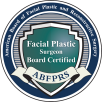Rhinoplasty (Nose Job) in NYC
THE PROCEDURE
WHAT is Rhinoplasty?
Each year thousands of people undergo surgery of the nose. Nasal surgery may be performed for cosmetic purposes, or a combination procedure to improve both form and function. It also may alleviate or cure nasal breathing problems, correct deformities from birth or injury, or support an aging, drooping nose.
Patients who are considering nasal surgery for any reason should seek a doctor who is a specialist in nasal airway function (deviated septum), as well as plastic surgery. This will ensure that efficient breathing is as high a priority as appearance.
Can a Rhinoplasty (Nose Job) a “Perfect” Nose?
Aesthetic nasal surgery (rhinoplasty) refines the shape of the nose, bringing it into balance with the other features of the face. Because the nose is the most prominent facial feature, even a slight alteration can greatly improve appearance. (Some patients elect chin augmentation in conjunction with rhinoplasty to better balance their features.) Rhinoplasty alone cannot give you a perfect profile, make you look like someone else, or improve your personal life. Before surgery, it is very important that the patient have a clear, realistic understanding of what change is possible as well as the limitations and risks of the procedure.
Skin type, ethnic background, and age will be among the factors considered preoperatively by the surgeon. Except in cases of severe breathing impairment, young patients usually are not candidates until their noses are fully grown, typically at 15 or 16 years of age.
DR. ZIMM RHINOPLASTY RESULTS IN NEW YORK CITY
NYC RHINOPLASTY BEFORE AND AFTER
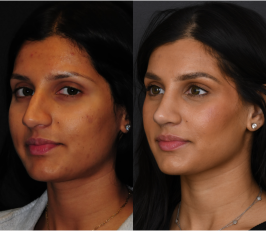

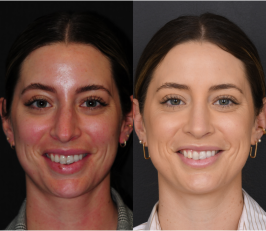
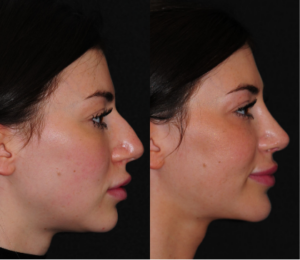
RHINOPLASTY CAST REMOVAL REACTIONS
Nose Job (Rhinoplasty) Surgery
- Incisions are made in the inside of the nose, where they are not visible. In some cases incisions may be made in the area of the skin separating the nostrils.
- Underlying bone and cartilage are sculpted to create the nose’s new shape.
- Skin is re-draped over the nose’s new frame and all incisions are closed.
- After surgery is completed a small cast is placed on the nose to maintain the newly sculpted nasal framework in position. Dr. Zimm does not use nasal packing except in very rare circumstances. Large packs are not used. Small internal silicone splints may be applied for additional support and are usually removed after 7 days.
Challenges in Achieving Results
- Rhinoplasty is a very detailed procedure. The ultimate result depends to a great extent on how your skin heals. Improvement, not perfection, is the goal.
- How your skin heals.
Returning to Normal After Rhinoplasty
- Rhinoplasty takes between 2 to 3 hours to complete and is done at the hospital, typically under general anesthesia.
- Full daily activities can be resumed within 2 weeks of surgery, strenuous exercise, within 3 weeks and contact sports, diving or weight lifting after 6 weeks. Also, you can travel (even by airplane) by day 8 of your recovery, and eyeglasses can be worn on the bridge of the nose after 6 weeks.
- Small residual swelling can persist for several weeks and the final refinement can take several months to a full year to settle depending on the thickness and quality of your skin.
Achievable Outcomes Through Rhinoplasty
- Rhinoplasty can reduce a nose that is too large, narrow a nose that is too wide, straighten a nose that is crooked, eliminate unsightly bumps, reshape the tip and improve the angle between the nose and the upper lip for a more youthful look.
- In certain noses, such as in Asian or African American noses, rhinoplasty can provide a stronger bridge, enhance tip definition and narrow the base for a more defined look.
- It can increase air flow where obstructions in the nose are causing breathing and sinus problems.
- It also decreases concerns and renews one’s self-confidence once an undesirable feature has been corrected.
Factors Influencing Rhinoplasty Outcomes
- The degree of nasal refinement desired.
- The level of function of nasal structures.
- The structure of the nose, both internally and externally.
- How the shape of the nose relates to the overall contour of your face and specific facial features.
- Whether chin augmentation or reduction, in addition to rhinoplasty, may benefit the overall profile.
- Skin texture and thickness.
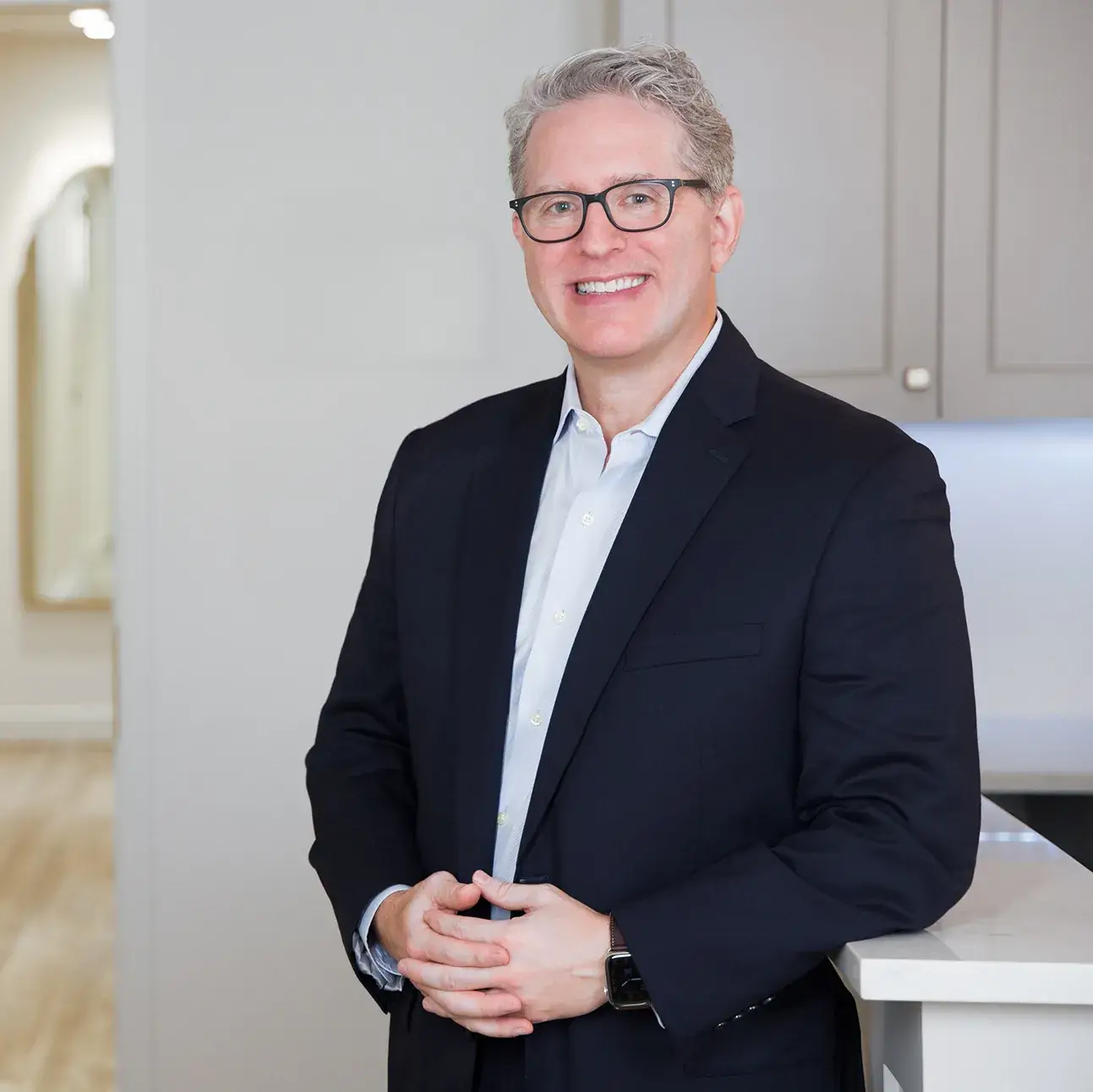
MEET OUR RHINOPLASTY SURGEON
Why You Should Choose Dr. Joshua Zimm
Dr. A. Joshua Zimm is a leading expert in rhinoplasty with extensive training in Otolaryngology–Head and Neck Surgery at New York’s top hospitals, including Columbia-Presbyterian and Manhattan Eye, Ear, and Throat Hospital. After a decade in practice, Dr. Zimm completed an advanced Fellowship in Facial Plastic and Reconstructive Surgery. Board certified and a recognized member of The Rhinoplasty Society of Europe, Dr. Zimm combines refined surgical skill with a deep understanding of facial aesthetics, specializing in nose reshaping. His accolades include “America’s Top Physicians” and “Man of the Year in Medicine,” marking his contributions to rhinoplasty and patient care.
DR. ZIMM’S NYC RHINOPLASTY (NOSE JOB) REVIEWS
FEATURED testimonials
RHINOPLASTY (NOSE JOB) FAQs
Frequently asked questions
While pain can vary from patient to patient, the majority of patients undergoing rhinoplasty in New York City will rate the pain as mild to moderate. As one of the least painful cosmetic surgeries, patients often rate their pain a 0 to 4 out of 10 on the first day after surgery.
While pain is present after surgery, the most common complaints after rhinoplasty are facial swelling and nasal congestion.
A nose job in Manhattan can range in cost from $10,000 to $20,000 on average. Many different factors ultimately determine the overall cost of the procedure. The factors can include the degree of correction needed, the experience and expertise of the surgeon, and if any additional procedures are required.
A nose job in New York City is performed by altering the bone and cartilage structures of the nose. Once these are fully healed, the results from the procedure are permanent. Even as you age, the shape and contour of the rhinoplasty will remain unchanged providing long-lasting results.
Most patients have the impression that a tip rhinoplasty is cheaper than a full rhinoplasty, but this is not always the case. A tip rhinoplasty incorporates the most difficult part of a rhinoplasty and requires extensive knowledge and skill. Therefore, it is recommended to utilize a Manhattan rhinoplasty surgeon experienced in performing tip rhinoplasty procedures.
There is no perfect age to undergo a rhinoplasty procedure. However, New York City nose job experts recommend waiting until at least 18 years of age to allow the nasal structures to completely mature. Overall, for healthy patients, a nose job can be performed at any age and should be determined by when you feel the time is best for you.
Aging generally affects the collagen within the skin and not the nasal structures. Therefore, as one ages, it is possible to notice minor changes in the nose's appearance, but these are related to changes in the skin. The actual structure of the nose will remain unchanged and the shape created after a rhinoplasty will last a lifetime.
A rhinoplasty procedure is an outpatient procedure that can require general anesthesia. However, despite needing general anesthesia, patients can return home the same day of surgery. While even the best rhinoplasty surgeon in New York City can require a few hours to complete the procedure, there are typically no reasons a patient will require an overnight stay in the hospital.
Rhinoplasty specialists in New York City estimate that 5-10% of primary rhinoplasties fail. The chances of this occurring can be decreased by choosing the top rhinoplasty surgeon in Manhattan. Surgeons with experience and expertise will have few complications and surgeries requiring revision.
